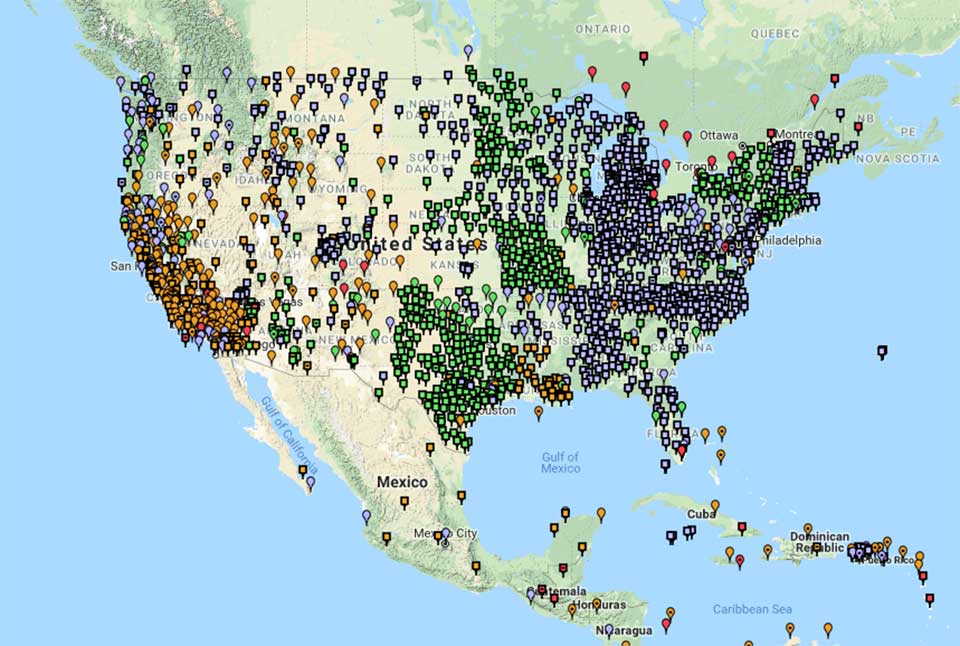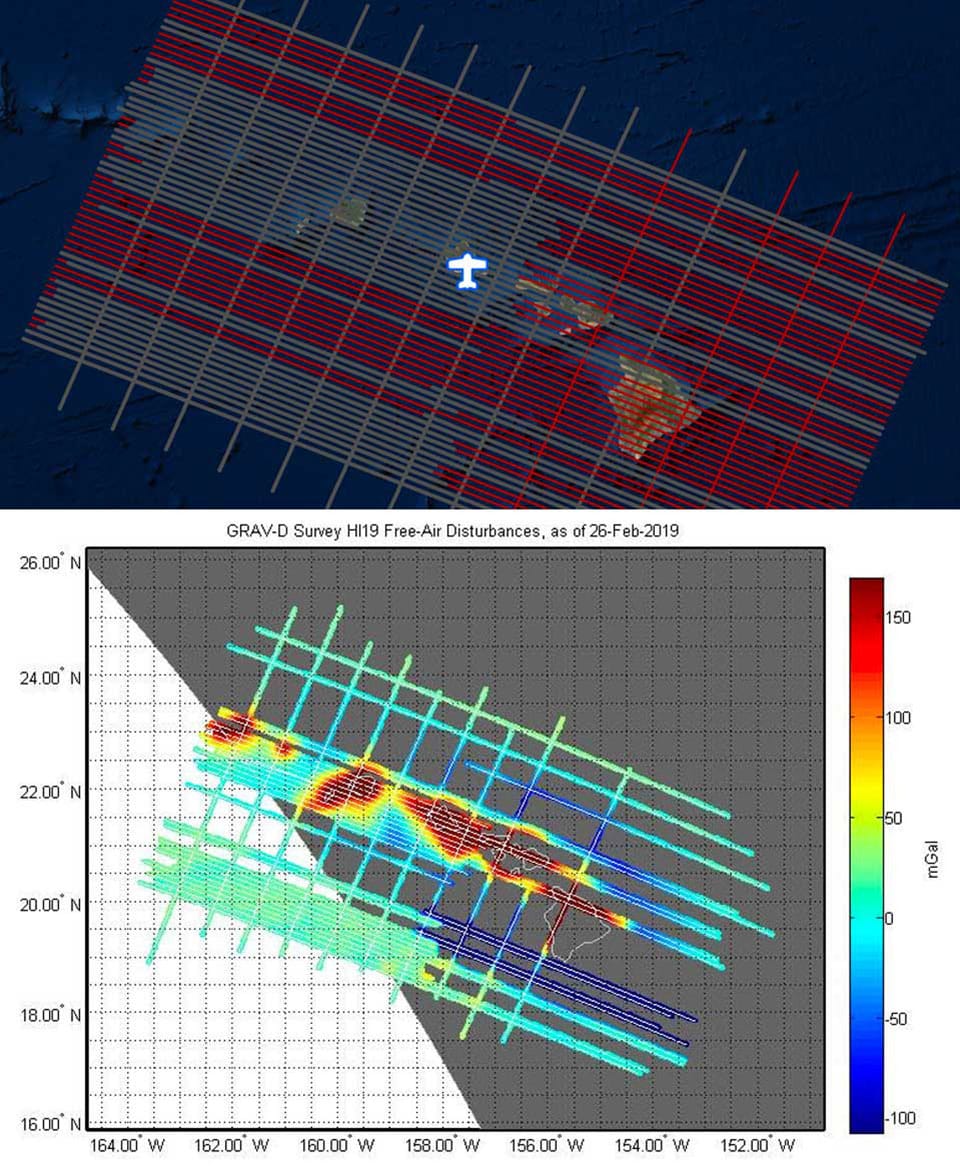Just a few inches of inaccuracy in measuring the height of the location of a house could mean the difference between a flooded and a dry home. Learn more about the use and importance of geodetic datums in this National Geodetic Survey video.
Suppose you are buying a new home that is located near a river that routinely floods. During the buying process, you learn that you are required to have flood insurance. A step in the process of obtaining this insurance is to get a certified elevation of your new home from a professional surveyor. Wouldn’t it be easier (and cheaper) to simply provide your insurer with the elevation of your home? After all, it’s relatively easy to get this elevation information right from your mobile smartphone.
These days, it’s routine to use a smartphone and a mapping app to find out your elevation above sea level in the United States. Unfortunately, this height information is not very accurate. For casual use, it is generally good enough. But more accurate authoritative heights are required for many professional applications, including certifying elevations for flood insurance.
Particularly in low-lying coastal areas, this information is critical because professionals need to know how water will flow from point to point across the land. Experts who survey the elevations of houses, create flood zone maps, plot hurricane evacuation routes, or plan future coastal development to account for sea level rise all rely on accurate heights.
Meet the Vertical Datum
This is where NOAA’s National Geodetic Survey (NGS) enters the picture. Scientists at NGS maintain a nationwide coordinate system that defines latitude, longitude, height, scale, gravity, orientation, and the national shoreline throughout the United States. This reference system ensures that those who need accurate positioning information — whether they are in Alaska or Guam or Key West — are all working from the same reference points. The height component of this nationwide system is called the vertical datum. This datum is a collection of specific points on the Earth with known heights either above or below mean sea level.

NOAA's National Geodetic Survey defines and manages the National Spatial Reference System — a consistent coordinate system that defines latitude, longitude, height, scale, gravity, and orientation throughout the United States. In addition to a network of continuously operating reference stations supporting three-dimensional positioning activities (shown here), the reference system includes a network of permanently marked points; a consistent, accurate, and up-to-date national shoreline; and a set of accurate models describing dynamic, geophysical processes that affect spatial measurements.
Sea Level is Lumpy and Irregular
Measuring elevation is more complex than most people realize. It sounds easy enough: the elevation of a point on land is a measurement of how high it is above sea level, right? The problem is that sea level is not level at all: it is lumpy and irregular.
If the Earth were a perfect sphere with no mountains or valleys, sea level would also be the same everywhere. But the Earth, of course, is far from uniform.
The Earth bulges at the equator due to the long-term effects of the earth’s rotation. And, at a smaller scale, topography also affects the mass of the Earth at different locations — a mountain has more mass than a valley, so the pull of gravity is stronger near mountains.
All of these large and small variations to the size, shape, and mass distribution of the earth cause slight variations in the strength of gravity in different places around the globe. These variations determine the shape of the planet’s water. This shape is what we call global sea level.
Think of it this way: If we could remove the tides and currents from the ocean, it would settle into a smoothly undulating shape (rising where gravity is high, sinking where gravity is low). This irregular shape is called “the geoid.” It is the surface which defines zero elevation. Using complex math and gravity readings on land, surveyors extend this reference surface through the continents. And this model is used to measure surface elevations.

National Geodetic Survey survey technician Justin Dahlberg collects gravity measurements aboard NOAA’s Gulfstream IV aircraft, shown in top image, over the Hawaiian Islands in February, 2019.
Reaching New Heights
How we calculate accurate heights based on mean sea level today is good, but it’s quite complicated, expensive, and time-consuming. Scientists at NGS have recently completed a 16-year project to make accurate height measurement dramatically better. The result will be a new vertical datum that will allow users to calculate heights to within about an inch for most locations around the nation.
The new model will not only give more accurate height measurements, it will serve as the baseline to update height data over time as gravity values around the nation shift with the changing landscape of the Earth. The new model will also be tied into GPS, so it will be easier than ever to get accurate height information. Last but not least, users will be able to see more easily how heights are changing over time for a given area. That’s a big deal when monitoring things like levee heights, hurricane evacuation routes, or the elevation of your home.
More accurate measurements are expected to pay big dividends. A recent study estimated that this project, the Gravity for the Redefinition of the American Vertical Datum (GRAV-D for short), will provide about $4.8 billion in social and economic benefits to the nation over 15 years through improved floodplain mapping, coastal resource management, construction, agriculture, and emergency evacuation planning. The study estimates a savings of $2.2 billion in improved floodplain management alone, because better height measurements will result in less property damage from flooding events.
Surveying the entire gravity field of the United States, including its territories, to update the nation’s vertical datum has been one of the most ambitious projects ever undertaken in the more than 150 year history of the National Geodetic Survey. While it has not been an easy task, the result will transform how we measure accurate heights for decades to come.
What’s Next? Maintaining the Vertical Datum
Since the earth is a dynamic place, scientists at NOAA expect the new vertical datum to change over time. In certain regions, such as the area north of the Great Lakes and much of Alaska, it is expected that the shape of the undulating surface of the vertical datum will change by up to 1 mm per year. Those changes may seem small at first, but after a decade or more, these small changes can really add up. Surveyors need stability with the models they use, so NGS will release a static geoid model and an additional dynamic geoid model that will meet the practical needs of surveyors and the forward thinking needs of scientists. To maintain the dynamic geoid model and inform future versions of the static geoid model, NGS intends to complete a combination of ground and air based gravity measurements in an effort to capture useful information about how our dynamic planet is changing over time.

The Big Picture
-
More Accurate Height Measurements: Coming Soon.
Scientists at the National Geodetic Survey have completed a 16-year-long project to collect airborne gravity data over the entire US and its territories. This data will be used to make accurate height measurement better, faster, and cheaper. This project is called the Gravity for the Redefinition of the American Vertical Datum, or GRAV-D for short. When it is completed, you will be able to get accurate heights to within about an inch for most locations around the nation.
-
Measuring Heights Will Be Easier Than Ever Before.
Not only will height measurements be more accurate, people will be able to more easily keep those measurements up-to-date and better predict how heights may change in the future. The improved model for measuring accurate heights will also be tied into GPS, so it will be easier and faster than ever to get accurate height information.
-
Better Heights = Billions Saved.
A recent study estimated that this update will lead to about $4.8 billion in social and economic benefits to the U.S. through improved floodplain mapping, coastal resource management, construction, agriculture, and emergency evacuation planning.
-
Accurate Heights Reveal Which Way Water Flows.
In low-lying coastal areas, accurate height information is critical for knowing how water will flow across the land for many applications, like monitoring levee heights, maintaining safe hurricane evacuation routes, creating more accurate floodplain maps, and managing coastal development as sea levels rise. Accurate heights are also needed to maintain efficient water delivery and drainage systems and to help reduce urban and agricultural runoff and water pollution.
Making a Gravity Map

The image above is a map displaying the gravity disturbance in the Hawaiian region using data collected with the NOAA Gulfstream IV aircraft and the NASA Gulfstream IV aircraft. Gravity disturbance is the difference between observed gravity in the aircraft and a gravity value that can be calculated if we assume the earth is uniformly dense and shaped like a squished sphere (ellipsoid or spheroid). Gravity has to be accounted for when taking elevation measurements because the Earth's gravity field varies from point to point. These variations affect how water flows.
Social